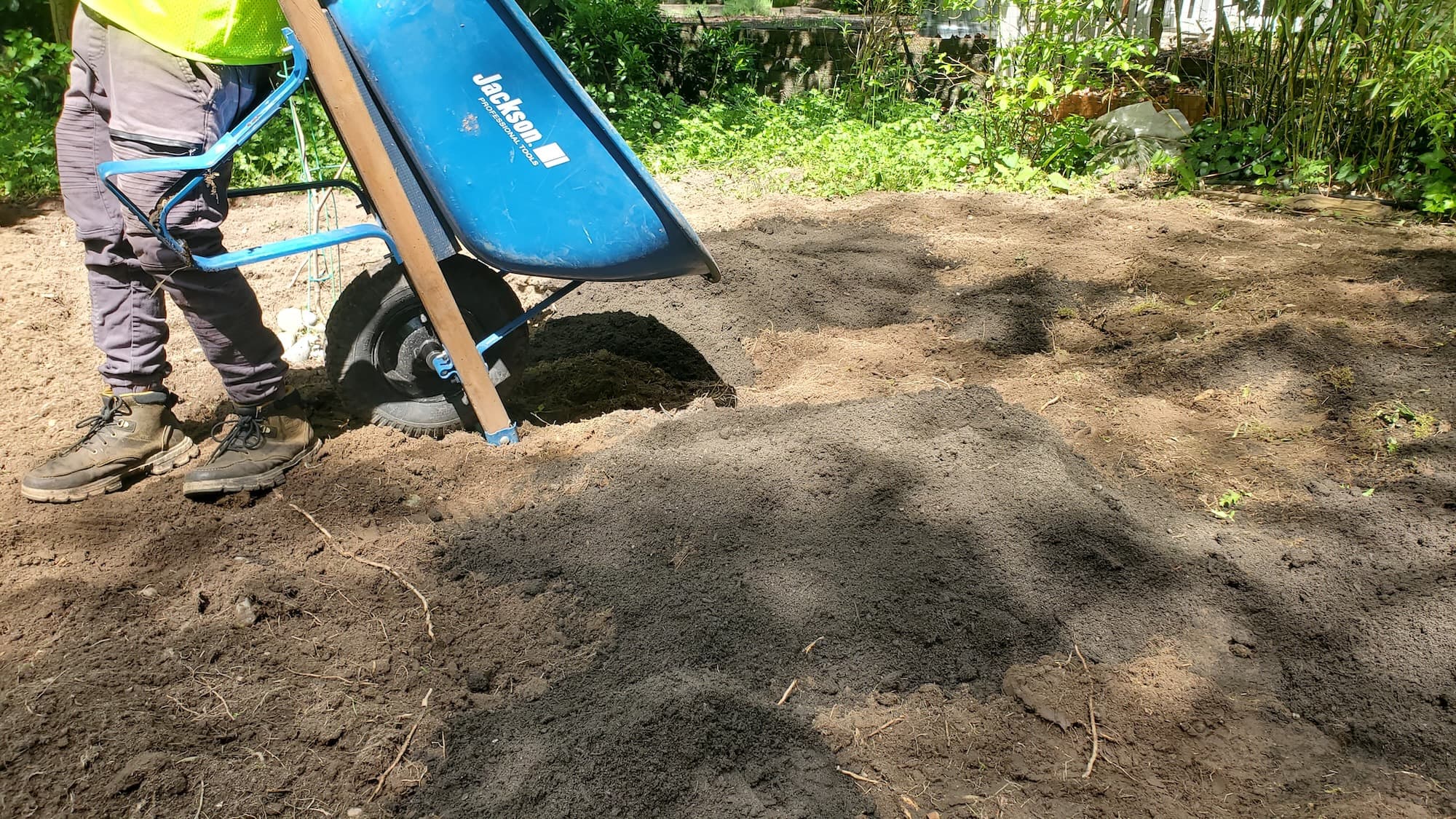West Seattle Crushed Stone Walkway
Homeowner’s Issue
West Seattle yards face a mix of challenges: heavy seasonal rain, shady corners that hold moss, compacted glacial till in upland spots, and sandy fill closer to the water at Alki and Seaview. Many homes on slopes—Admiral and areas near the Fauntleroy ferry—have short, steep approaches that trap runoff; poor drainage here turns paths into muddy hazards. South- and west-facing exposures get decent sun in summer but long, damp winters keep surfaces soft and encourage weed pressure and moss under trees. Lawns and garden beds around older bungalows often have a heavy clay layer or compacted fill that weakens subgrade bearing and causes uneven settling.
Homeowners tell us they want something practical: a safe, permeable path that drains, resists rutting, and looks tidy without constant upkeep. HOA and curb appeal expectations around high-visibility streets like California Ave and steps near Lincoln Park mean the finish should be neat and predictable. We design crushed stone walkways to accommodate local rainfall cycles, improve slope stability, and reduce the need for frequent repairs. We use hand-removal and organic control for weeds, durable subbase compaction for our damp winters, and edge detailing to keep the material where it belongs—no herbicides, ever.
Our Quality Service
We design and install crushed stone walkways tailored to West Seattle microclimates. Typical workflow:
- Site visit and elevation check to map drainage and slope.
- Remove vegetation where needed and rework compacted subgrade.
- Install geotextile where appropriate, followed by a crushed rock base and compacted topcourse.
- Finish with compacting, edging, and grade adjustment to shed water away from foundations.
Tools and methods: plate compactors, grading rakes, laser level for grades, hand tools for sensitive spots. Timelines: most standard walkways (50–150 sq ft) take 1–2 days on site; larger or sloped installs can take 2–4 days with drying/settling time. We use sustainable materials and organic weed-control methods only. We recommend siting, drainage swales, or dry creek beds on steep runs to manage runoff rather than hard, impermeable surfaces.
Benefits: safer, permeable surface that reduces puddles; low long‑term maintenance; improved curb appeal for areas visible from Alki, Morgan Junction, or Admiral; and durable results that handle West Seattle’s rainy seasons.
What’s Included
- Onsite assessment and digital layout mockup.
- Vegetation clearance and subgrade preparation.
- Geotextile (where needed) and compacted crushed rock base.
- Top layer of smaller crushed stone, compacted and edged.
- Final grade for proper drainage and a walk-through.
Options / Upgrades:
- Decorative edging (steel, timber, or poured concrete band).
- Weed-suppressing fabric plus extra topcourse for high-traffic areas.
- Organic weed control and manual root removal (no herbicides).
- Planting strip with native, drought-tolerant edging plants.
- Haul-away of debris vs. green‑bin / city compost drops (you choose).
Before & After / Expectations
Expect some noise and hauling on install days—compact machinery, wheelbarrows, and trucks. We keep access tidy and stage material where it minimizes disturbance. Small projects usually generate a wheelbarrow-load or two of green waste and soil; larger jobs may require a truck for excess material.
After installation:
- Surface will settle slightly over the first rainy season; plan a light top-up in year one.
- Raking and occasional topping (2–5 years depending on traffic) keeps the surface even.
- In shady, moss-prone spots, clear organic debris regularly in spring and late fall.
- Watering: crushed stone paths don’t need irrigation; adjacent plantings should be scheduled for morning watering windows to reduce evening moisture and moss growth.
We handle slope detail to minimize erosion; on steep approaches we install gradual grades and mechanical compaction to prevent washouts during heavy storms.
FAQs
Q: How long will a crushed stone walkway last in West Seattle?
A: With proper base and edge restraint, expect many years. Top dressing may be needed every few years in high-traffic zones.
Q: Do you use herbicides to stop weeds?
A: No. We use manual removal, mulches, fabric options, and organic measures only.
Q: Will a crushed stone pathway handle slopes and heavy rain?
A: Yes—if we rework the subgrade, install a proper base, and set drainage grades or swales. Steep runs may get stabilizing edging or a cobble apron.
Q: How soon can you start and how long will it take?
A: Typical scheduling is within 1–3 weeks depending on season; most small to medium paths finish in 1–3 working days.
Call to Action
West Seattle homeowners: if you want a safe, sustainable walkway that fits local soil and rain patterns, book a free estimate. We schedule quickly, work cleanly, and use methods built for Alki breezes, Admiral slopes, and the rainy season. Email neatandtidyseattle@gmail.com or call 206-538-9344 to set a visit. Licensed, insured, and straightforward—no herbicides, just durable results.










